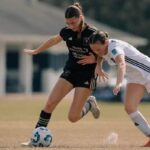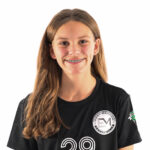Taking Action Against Concussions: Eight things you can do with your team right now
 Concussions are a terribly important issue in sports today. You’ll get no argument from me. I came into the conversation early digging up the facts and shaking out the recommendations
Concussions are a terribly important issue in sports today. You’ll get no argument from me. I came into the conversation early digging up the facts and shaking out the recommendations
SoccerWire.com published these in June of 2012:
Concussions: Not just a bump on the head (Part 1)
Concussions: Not just a bump on the head (Part 2)
The conclusions:
- We need to know the symptoms.
- We need to teach better heading technique
- When in doubt, sit them out.
- Strengthening, especially for girls, may reduce concussions.
If you are still unsure of symptoms, the CDC has excellent resources here.
We are NOT short of education. In fact, we’re deluged. Everywhere, we are being warned about the risk and told about the symptoms and reminded of the prevalence. Even at the professional levels, when a player plays on against medical advice and the urging of teammates, the world takes notice and inquiries begin.
Even the 10-year-olds I train know what to look for. One girl told me she couldn’t participate fully in the session because a sledding mishap had left her with a concussion.
“How do you know you have a concussion?” I asked her.
She gave me a confused look, so I tried a different tack. “You know. How do you feel?”
“Oh, you mean the symptoms?”
“Yes, the symptoms.”
“Nausea, vomiting, losing consciousness…” she begins. I’m surprised that a topple from a sled could cause all this. “Oh, I didn’t have any of those,” she says, “but sometimes my head still hurts.”
 Even our 10-year-olds KNOW about concussions. Maybe even a bit too much about concussions. Have we all gotten our fill?
Even our 10-year-olds KNOW about concussions. Maybe even a bit too much about concussions. Have we all gotten our fill?
That’s what occurs to me when, even with big names (Briana Scurry, Alecko Eskandarian (pictured at right), Taylor Twellman) headlining the concussion panel at the National Soccer Coaches Association of America Convention this month, the room is at least half-empty.
Why? Because we all know about concussions. The hard part is doing something about them. And the doing means making tough decisions and sticking to them. We have to sit a player who doesn’t want to sit. We have to face the parent who begs us to let the kid play. We have to go against our own inclination to keep our best kid in when the game outcome is on the line. It’s way easier to delay the decision or make it someone else’s responsibility.
We don’t need to wait for more education. We don’t need to hire more trainers or legislate more online education for coaches and parents and athletes. We certainly don’t need a nationwide solution before we get started dealing on ours. All of this waiting shows that we have given this problem to someone else to solve for us. That doesn’t sound like a winning strategy to me.
If nothing else, we owe it to these players whose soccer careers came to abrupt ends and whose lives have been forever changed to drum up the gumption to act now.
Their words tell a heart-wrenching truth.
“I had to retire from what I loved most in the world.”
“I was told ‘You’ll never play again.’”
Of the ongoing symptoms: “This is not a life you’d ever want to live.”
 Scurry relates, “‘When I look at the replays of the ’99 [Women’s] World Cup [final] save; I know it’s me. But I can’t be sure. I don’t remember it.”
Scurry relates, “‘When I look at the replays of the ’99 [Women’s] World Cup [final] save; I know it’s me. But I can’t be sure. I don’t remember it.”
Testimony is a powerful force to compel people to action. Change is coming. But change, especially large change, happens slowly. Conversation and conferences are not going to get this done. Legislation is glacial in its pace, with its red tape and fear of retribution and law suits. Health professionals are doing their best to educate parents and coaches and athletes. And from what I can see, it’s working.
But the vast majority of our games each week are youth games on fields in our communities. Coaches and parents can be the change those kids need now. Here’s where to begin:
- Start kids young (9-13 years) with exposure to motor skill learning and motor control of their bodies. Trying to learn new skills at the same time they are quickly growing in size and strength is a recipe for disaster.
- Track “hit counts” for each of your players. That means, collisions, falls, hard tackles, etc. in addition to knocks to the head or jarring impact that leaves them dazed.
- Train their dynamic vision. The better field vision they have, the quicker they react and can anticipate and prepare for impact.
- Counsel players who have a “bad hits” profile. Get them on video if you can and show them what a brain study looks like for someone who has sustained a lot of collisions. Teach them how to play in a way that protects their brain (and others’). Behavior modification works if the coach insists and sticks to his/her guns.
 Beyond these, we need to have a strategy to beat concussions.
Beyond these, we need to have a strategy to beat concussions.
- Train and coach players to be strong in the challenge. Add strengthening for upper body and torso (core) with your players and instruct them in technique to head with a hinge from the waist while protecting themselves with their arms in potential collision situations. See this video for details about easy-to-perform strengthening exercises.
- Get an app for identifying and monitoring concussion symptoms. I have the PAR Concussion Recognition and Response App on my phone: Check it out here.
- Perform pre-season screening for stability and balance and compare on the sidelines if they have a knock. One easy to use test is the Balance Error Scoring System (BESS) test. Evaluate each athlete in 3 positions: double leg stance, single leg stance on non-dominant foot, and tandem stance, heel-to-toe with non-dominant in the back. Try 20 seconds with eyes open and 20 seconds with eyes closed in each position.
- Identify a parent on your team to become your concussion expert. They are the sidelines assessors for anyone who has a collision, a knock, shakes their head, appears dizzy, or shows any signs their mental status might have been compromised during play. Their job is to know the signs and symptoms of concussion, how to use the concussion app for evaluation and recording injury and know how to administer the balance test.
Read more on the physiology and sport science of concussions here. For help with putting any of these strategies into practice, contact me at: [email protected]. I’m happy to help.
There are things we can do on the field to protect our players against concussions. Let’s not wait for the legislatures or additional funding and staffing. If Briana, Alecko and Taylor can teach us anything, it’s this: stop talking about concussions and start doing.
The doing means we have to draw the line. If we suspect any head injury, they don’t go back in. Period.
SOCCERWIRE MARKETPLACE
- The St. James FC Travel Staff Coach - North (Loudoun) & South (Fairfax)
- The St. James FC Girls Academy (GA) Head Coach - 2 teams
- The St James FC Boys Travel Tryouts
- OFFICIAL BAYERN MUNICH SUMMER CAMPS U.S.
- JOIN THE ALLIANCE!
- OFFICIAL FC BARCELONA CAMPS U.S.
- The Cup San Diego - Hosted by Legends FC
- Players Wanted - Undergraduate or Post-graduate
- Head Coach - South Region at The St. James FC
- Travel Coach - North Region at The St. James FC












